Many Americans experience the tight squeeze of tough economic times. In many parts of the nation, unemployment statistics may unexpectedly soar to an all-time high. When this happens, jobs are hard to find. If you are in a situation where you need to cut back on living expenses to stretch your budget, reducing the amount you spend on food is one of the easiest and most immediate ways to save money. Ben Franklin’s sage advice continues to hold true: “A penny saved is a penny earned.”
https://www.instagram.com/p/Bc8PVKsHMb6/?tagged=budgeting
While items like the mortgage or car payment are fixed amounts, the amount spent on food is discretionary. Family food expenditures vary widely from household to household. Some frugal folks can feed a family of 6 on $400 a month, others spend that much for a single person.
If you are not paying attention, the dollars spent on foolish food choices add up. Cutting back on a few areas may not seem like much of a saving; however, when added up the monthly total can be substantial.
To put into perspective the differing amounts that families spend on food each year, here are some statistics from The United States 2010 Census report:
- The average cost of a nutritious weekly diet for a family of 4 was $185.50 per week, equating to $9,646.00 per year.
- Families on a “thrifty” budget reported spending $116.20 per week, equating to $6,042.40 per year.
- Families on a “liberal” budget spent $229.90 or more per week. This adds up to $11,954.80 or more a year.
The Census Bureau advises adding 10 percent to the calculation for each additional person in the family. To put this into perspective, typical households in America spend between 8-11 percent of their annual income on food.
Involve The Whole Family
The first step in controlling and reducing your food expenditures is to create an accurate record of all the money you and your family typically spend on food items each month. Include fast food, snacks, candy, bottled water, dining out, the after work cocktail, and your morning latte. Ask each family member to keep a diary for a week and faithfully record expenditures. The project can be enlightening and motivating.
https://www.instagram.com/p/BXmr50CBG70
Many people are amazed at just how much they spend out of pocket for junk food, snacks, candy, and beverages. Discuss family health concerns and diet restrictions. Practicing “food frugality” can be fun! You don’t have to give up all your expensive food indulgences, rather you should save them as a special treat. Practicing moderation is key when it comes to being frugal.
Create A Family Food Budget
Establish a food budget based on a set amount per person, per day. If you prepare a budget of $5 to $10 a person, determine the total amount for the week and stick to it.

If today’s meals cost more than the pre-planned amount, make up the difference by serving leftovers later in the week.
Plan for holiday meals and factor the added cost into your projected budget. Plan a few meatless meals to save for the prime rib and leg of turkey you really want for that future family celebration.
Evaluate Your Daily Diet
During the past two decades, obesity in the United States has risen to unprecedented levels. The U.S. Center for Disease Control and Prevention reports that 33.8 percent of adults are overweight.
17 percent (nearly 12.5 million) of children and adolescents from age 2 to 19 are obese. If you or a family member contributes to these unhealthy statistics, a nutritious, well-balanced food plan can trim your waistline, as well as your food budget. If you don’t eat as much, you won’t spend as much.
https://www.instagram.com/p/BXdMuxmlgXb/
The World Health Organization reports that 171 million people in the world have diabetes. Regarding global health concerns, diabetes is increasing at epidemic rates. Only 35 million people had diabetes as of 1985.
Obesity and unhealthy diets are two of the biggest contributing factors to the rise of diabetes worldwide. Avoiding or reducing the amount of fat-laden, calorie-dense fast foods in the diet, promotes a healthy weight and pares down the budget.
Encourage your family to make wise choices about what food they are turning into fuel.
Pack Your Lunch
Instead of eating an over-sized hamburger, French fries, and a can of soda, enjoy a meal of fresh fruit, vegetables, protein, and whole grains for half the cost. In the United States, a typical fast food meal costs between $6 and $8.
If you indulge in fast food daily during the workweek, you are spending up to $640 a month, or $7,680 a year, on junk food. Packing a lunch is a good way to avoid food that is high in fat calories and low in nutrients, while saving money at the same time.
Give Up Diet Soda
Unfortunately, many children, teens, and adults are addicted to diet soda. Diet soda is expensive, nutritionally bankrupt, and contains aspartame. Why would you drink it? It took the U.S. Federal Drug Administration 16 years to approve aspartame.
It appears they were justified in their caution. Once aspartame became common in diet drinks, and everything from pancake syrup to salad dressing, the FDA received more than 10,000 consumer complaints.
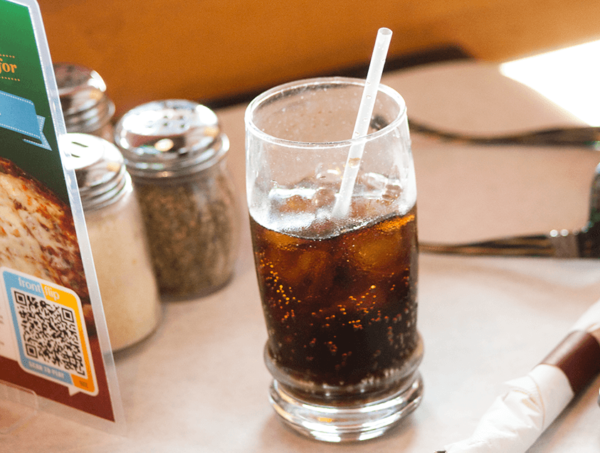
As a result of those complaints, the FDA reported 92 different symptoms linked to consuming aspartame. Symptoms included seizures, vision loss, headaches, memory loss, coma, and cancer. Scientists also say that aspartame appears to mimic or worsen symptoms associated with lupus, ADD, diabetes, chronic fatigue, fibromyalgia, MS, and depression.
Try replacing diet sodas with green tea. You will reap a plethora of health benefits for a fraction of the cost of a can of soda.
Read Labels
Can you pronounce, or do you even know about, some of the ingredients you ingest in pre-packaged foods? Are these ingredients something you want to put in your body? Whenever possible, substitute commercially canned food products with fresh or frozen ingredients.
Many canned foods are high in sodium and preservatives. Cook a family-sized pot of vegetable soup prepared with fresh, in-season vegetables. The cost per serving is two-thirds less than canned soup!
Pay For Groceries With Cash And Shop Local
Avoid putting grocery store bills on your credit card. It makes it too easy to add impulse items to your grocery cart, and you end up paying interest on the purchase. Curb your spending. Head for the store with only a fixed amount of cash in your pocket. By doing this, you will be forced to buy within your budget.
https://www.instagram.com/p/BXQ-ojzjK3M
Minimize the amount of gas you spend going to the grocery store. It doesn’t make good sense to drive across town to your favorite store when comparable grocery stores are closer to home.
Plan Your Meals
Maintain a grocery list. Review the store ads and plan meals to incorporate sale items. Be flexible in your meal planning. Be willing to make changes to substitute lower cost items you find on sale. Watch for sales and stock up on staples.
Buy Fresh Produce In Season
Succulent strawberries, crisp asparagus, apples, peaches, pears, and plums can be frozen or canned to enhance winter meals. Buy locally grown fruits and vegetables in season. Many growers let you save more money and harvest the produce yourself.
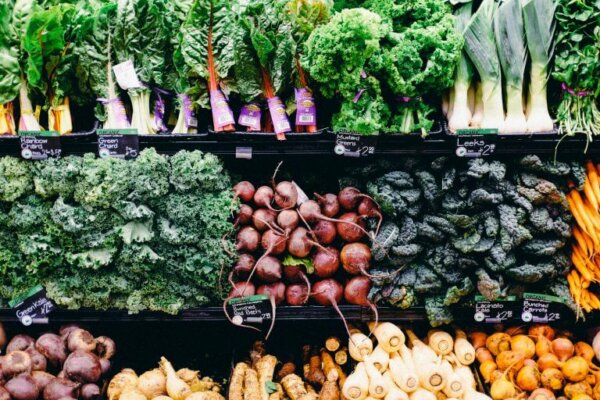
Learn the old-fashioned methods of canning and preserving to create jellies, jams, pickles, and pie fillings. Sweeten or season to suit your family’s taste buds, assured that the food is free of synthetic preservatives and coloring. Even better, there is a lot of pride derived from a pantry or fruit cellar full of colorful jars you canned yourself.
Cost Per Unit And Packaging
At the grocery store, pay attention to the cost per unit of the foods you buy. Cost per unit price is available, on the shelf tag, for the majority of food items. Read the small print and save a bundle. If brand “A” costs 27 cents an ounce and brand “B” cost 19 cents per ounce, you can easily see the savings add up when you select the lower cost per ounce product.
Just because the bag, box, can, tube, bottle, shaker, or jar of brand X is larger than brand Y, doesn’t mean it contains more of the product. Packaging can be misleading; another reason to carefully read the label.
Buy In Bulk
Pasta, beans, rice, barley, and lentils can be used in the preparation of a diverse range of dishes. These items can “stretch” meals and cut down on the amount of meat you purchase. Dry, bulk foods will last for years when stored in sealed, airtight containers.
Bought in bulk, these items cost a fraction of the amount you pay when purchased in smaller, packaged quantities. Flour, cornmeal, oats, sugar, salt, spices, coffee, and nuts have a long shelf life and are much cheaper when purchased in large quantities. Save even more by joining a neighborhood food cooperative or dividing the product and cost with a neighbor or friend.
https://www.instagram.com/p/BXfhchCjsDV
Not only will buying in bulk help you save money, but a supply of bulk foods are advised to help you and your family cope with a weather emergency. During a snowstorm, or in the aftermath of a tornado or hurricane, food is usually in short supply. Even when food is available in these circumstances, the price is generally high.
Even if you live alone, buy meat in large family packets. The price is much lower than the same meat wrapped in smaller packets. When you return from the market, wrap the meat in individual portions to freeze for future use.
Avoid Coupons
The majority of coupons are for packaged, name brand items. Coupons are an enticement to purchase items that may not be part of your family food plan.
If the coupon is for something you normally purchase, then by all means, take advantage of the savings. Don’t buy a food item just because you have a coupon for it. It will likely languish on your pantry shelf and go to waste.
Grow Your Own Food
A home garden can be a fun family project that saves money on the grocery bill, it is also a learning experience for young and old alike. Raise herbs, tomatoes, and peppers on your patio. Also try planting a few hills of different kinds of squash; it’s fun and easy to grow.
Try Hubbard, butternut, acorn, yellow neck, zucchini, or spaghetti squash. Incorporate the hills into established flowerbeds or a traditional garden plot. Squash stores well in a cool place and will provide you with an abundance of delicious food all winter long.
If you grow more than you need, share with friends or sell for profit at your local farmer’s market.
Make Your Coffee At Home
If you spend $3 to $4 a day on a latte, you will spend as much as $1,460 a year. Think of the cost if you often indulge in two or more per day.

Grind high-quality coffee beans at home, buy an attractive thermos or coffee cup, and prepare your caffeine “fix” before you leave the house in the morning. You will save $1,275 or more a year.
Stop Buying Bottled Water
Bottled water is incredibly convenient, but not a necessity. Medical science encourages everyone to drink 8 or more glasses of water a day. If you buy bottled water, that is a gallon a day. Many bottled waters cost up to $3 a quart, or $12 a gallon. If you constantly purchase bottled water, you may be wasting hundreds of dollars a month.
America is blessed with water. City water systems and rural wells provide a safe source of drinking water. If the water in your local area has an unpleasant, mineral taste, purchase a water filter and stop buying bottled water. Purchase a stainless steel water bottle for portability. You will stop spending needless dollars and contributing mountains of plastic to the landfill.
Eat At Home
Although it is tempting to grab a meal out when you are in a hurry or too tired to cook, home cooking is typically tastier, fresher, and more nutritious than restaurant prepared food. It certainly costs a lot less. Save eating out for special occasions. When you do eat out, look for happy hours or senior discounts.
Breastfeed Your Baby
The American Academy of Pediatrics, UNICEF, and the World Health Organization strongly support breastfeeding young infants. Breastfeeding offers the newborn child a wealth of protection against influenza and other threatening viruses. Mother’s milk is free, while packaged liquid formulas and formula powders are an expensive substitute for the real thing.
Make Your Own Baby Food
As your child grows and is ready for solid foods, the cost of prepared jars of baby food is astronomical. Buy several fresh bananas and mash them for your little one at the same cost of buying one tiny jar of bananas.
The same goes for cereals, meat, and vegetable dishes. When you prepare your child’s food yourself, you can be assured your baby is not consuming added chemicals, fillers, coloring, or preservatives. Before adding salt or spicy seasonings to family fare, set aside a portion for your baby.
https://www.instagram.com/p/BXkcltsgpqI
Blend baby food in a food processor or grinder to achieve the desired consistency. Baby food can be prepared in bulk and frozen for later use when needed. Freeze individual servings in small freezer storage containers or plastic bags.
References
- Saving Money When You Shop, Consumers.gov
- 9 Ways to Save on Food, AARP
- Reducing Wasted Food At Home, United States Environmental Protection Agency



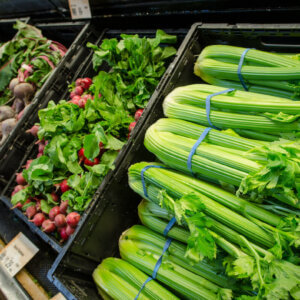
















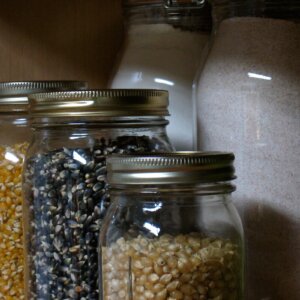
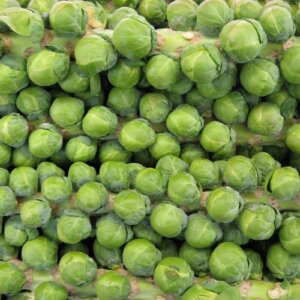















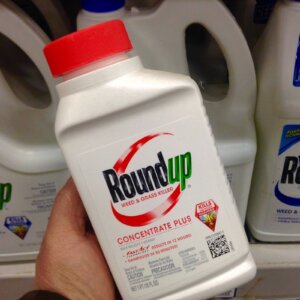




Leave a Reply